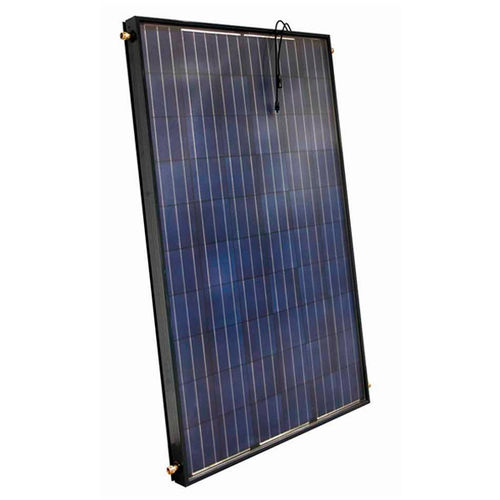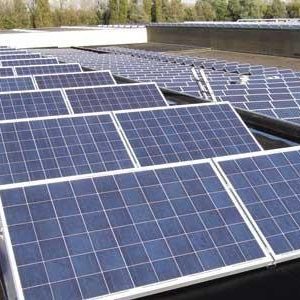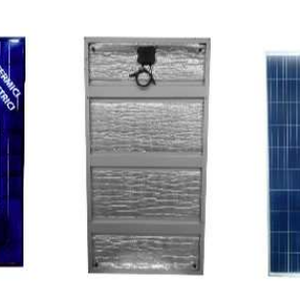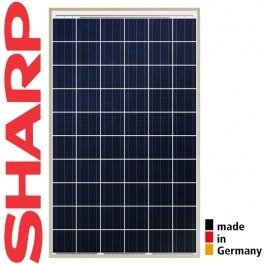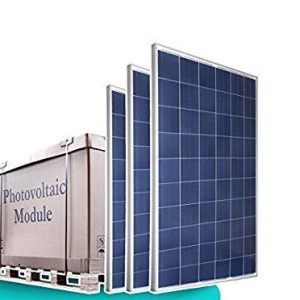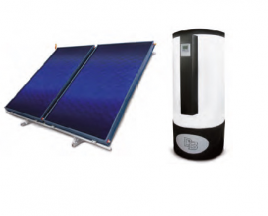300W Ecovolt hybrid solar panel for hot water, heating and electricity that enhances power generation.
The Enref Ecovolr hybrid solar panel is made in Spain and combines the production of hot water by solar energy together with the generation of electricity thanks to its 60 monocrystalline cells.
The installation of a hybrid solar panel has several advantages:
More economical than installing a solar thermal panel and another photovoltaic solar panel.
It needs less space, it needs approximately half the space as the installation of two independent thermal and photovoltaic panels
It needs less installation than putting two independent panels so there is also a saving in installation costs
Less maintenance cough
It improves the performance of the photovoltaic part, the photovoltaic solar panels lose efficiency when heated, the hybrid panels when filling the heat to the hot water tank, it cools the photovoltaic part and improves the performance up to 15%
Hybrid Solar Panel Operation
The hybrid solar panel is made up of photovoltaic cells, a heat absorber and a junction box for wiring. Like all panels, this system has a fluid inlet and outlet (from the heat absorber), where the photovoltaic cells are absorbed and pass through the entire panel until ending up in a junction box for electrical wiring.
Hybrid panels (unlike thermal or photovoltaic plates) can capture both energies since they are prepared to take advantage of the entire spectrum of existing light, from infrared light to ultraviolet light. This is important for it to be so because the photovoltaic panel captures ultraviolet energy better while the thermal panel captures infrared light better to generate energy.
Among all the differences between the photovoltaic panel and the thermal panel, the main one is that the photovoltaic obtains energy to generate electricity, while the thermal generates heat. Hybrid panels take advantage of the fact that sunlight produces heat to segregate both energies (thermal and solar).
Conventional photovoltaic panels couldn’t get more performance than they had because their system overheated too much, but hybrid panels now take advantage of all that heat to produce thermal energy, making it a more efficient and longer-lasting system.
General characteristics:
Cell size: …………………..156 x l56mm
Number of cells …………60 monocrystalline
Front glass: ……………….3.2mm tempered glass
Weight: …………………….30.5kg
Dimensions (LxAxE): ….1 640x992x40mm
Connection box: …………llP67
Cable length: …………….1 meter
Cable section: ……………4mm2
No. of diodes: …………… 3
MC4 compatible connectors
Frame anodized aluminum
Electric specifications
Rated power (Pmax): ………..300 Wp
Rated voltage (Vmp) …………32,5V
Maximum current (lmax) ……9.25A
Open Circuit Voltage (Voc) ..38,8V
Short Circuit Current {lsc) ….9,85A
Power tolerance ……………… 0 + 4.99 Wp
Efficiency of the module …….18.44%
Maximum system voltage ………..DC 1000V (TUV)
Operating temperature …………… -40ºC / + 85ºC
Maximum reverse current ………..15 A
Max caraga de viente / nieve ….. 2400Pa / 5400Pa
IP protection level …………………..IP65
Safety class …………………………..II
Temp coefficient voltage ………….- 0.31% / K
Temp coefficient intensity ………..+ 0.03% / K
Temp coefficient power ……………- 0.39% / K
Thermal specifications
Maximum pressure ……………6 bar
Recuperator: …………………… Aluminum
Capacity: ………………………….0.88L
Optical performance: …………0.472
Coef. Thermal losses, a1:…..9.5W / m2K
Coef. Thermal losses, a2: ….0w / m2k2
Loss of price: …………………..0.06 Bar

